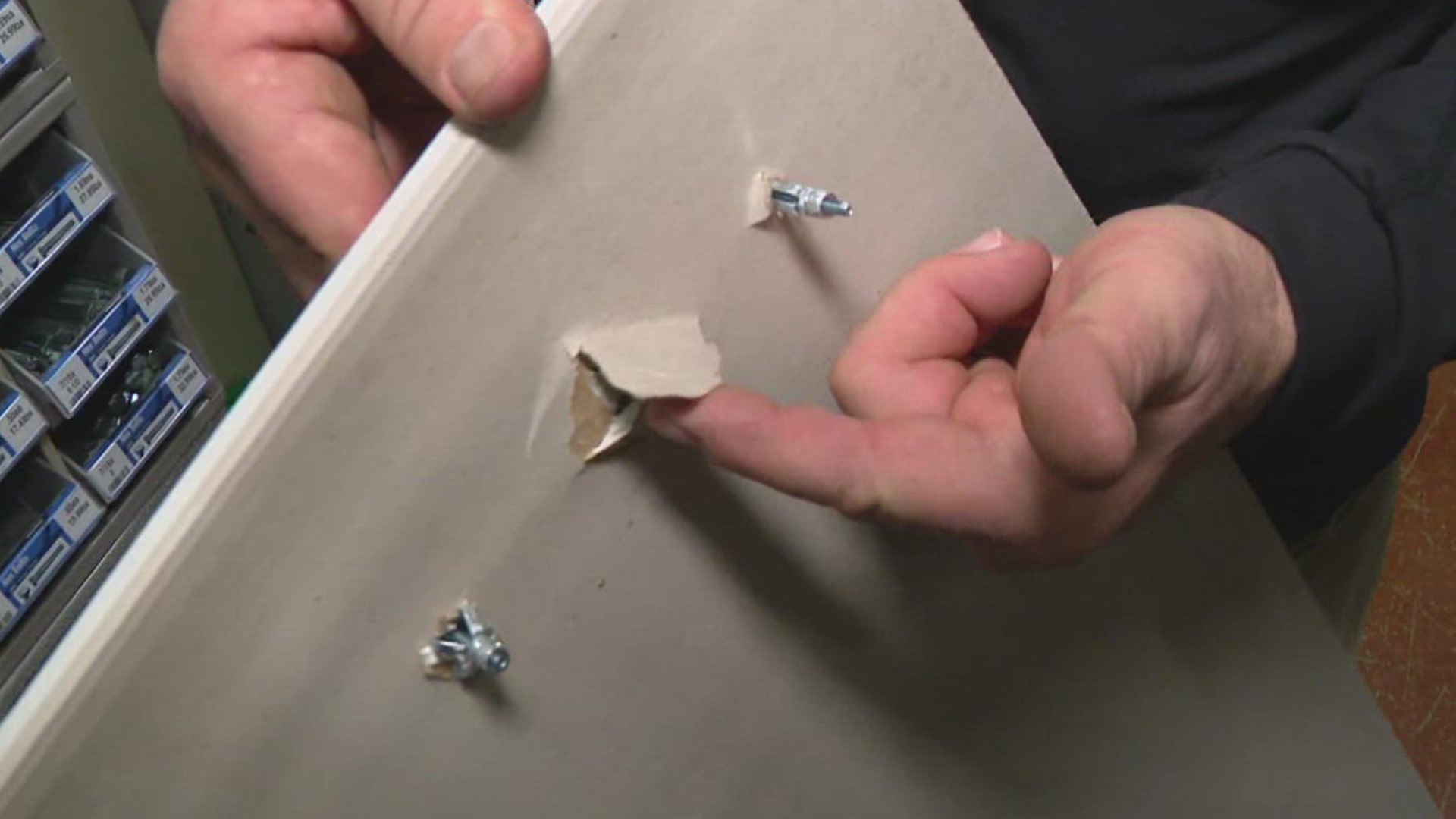INDIANAPOLIS — One of the most common do-it-yourself tasks is hanging items on a wall, whether it be pictures, artwork, a bookshelf or mounting a television.
Most walls are built using vertical wood supports called studs, then covered with sheets of gypsum covered by paper known as drywall.
A two-inch long screw or nail driven through the drywall layer into a wood stud is one of the sturdiest supports to hang a heavier object on a wall.
But many people, especially renters, don't want to make holes in walls that will need to be refilled and painted later. So they use temporary hooks that adhere to walls with sticky tape that can pull off without leaving blemishes. The downside of these hooks is that they don't support much weight.
Pat from Sullivan Hardware and Garden demonstrated on 13Sunrise how screws and wall anchors work to secure heavier objects to drywall and studs.
First, a stud finder can locate the wood inside a wall by sensing density of the material in the wall. The battery-operated sensor is dragged horizontally across the wall and will beep or light up when it passes over a stud behind the wall. That's the best location for a nail or screw to support the hanging hook.
But if there is no stud found in the center of a wall where a picture or other item would look best esthetically, Pat recommends a drywall anchor and screw to secure the hanging hook.
By drilling a hole in the drywall and pushing in a plastic anchor, you can then drive a screw into the anchor. As the screw penetrates the anchor, it will spread the anchor against the gypsum and paper, essentially forming a tight lock for the hook. Plastic anchors work best for lighter loads.
For a heavier object, a metal molly anchor that spreads and clamps to the backside of the drywall is more secure. The molly anchor comes with a threaded bolt that, once inserted into the drilled hole in the drywall, is rotated until the back side of the anchor is pulled and spreads like an umbrella to rest against the back of the wall.
Watch Pat's Sunrise segment and demonstration of installing a molly anchor in the video player.

